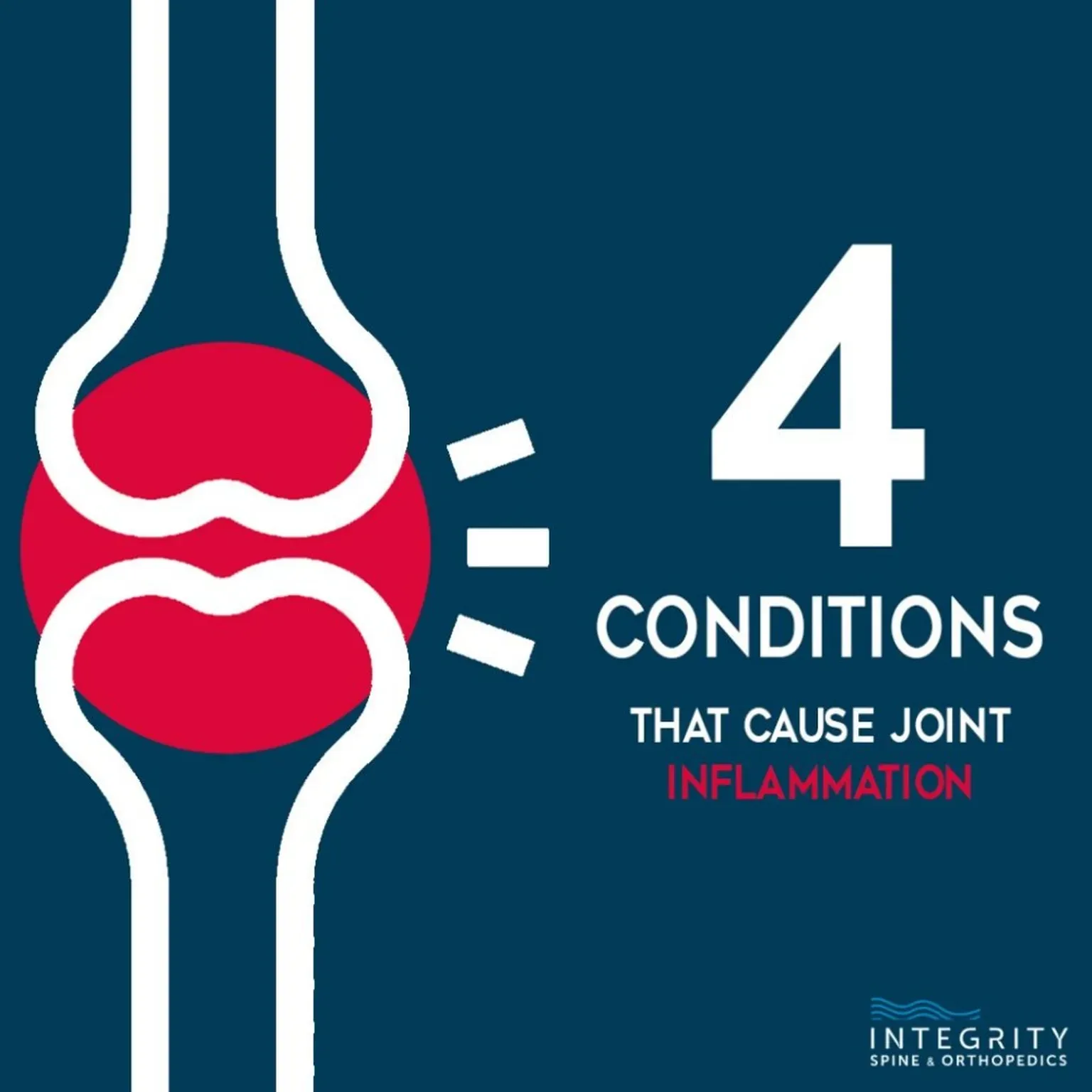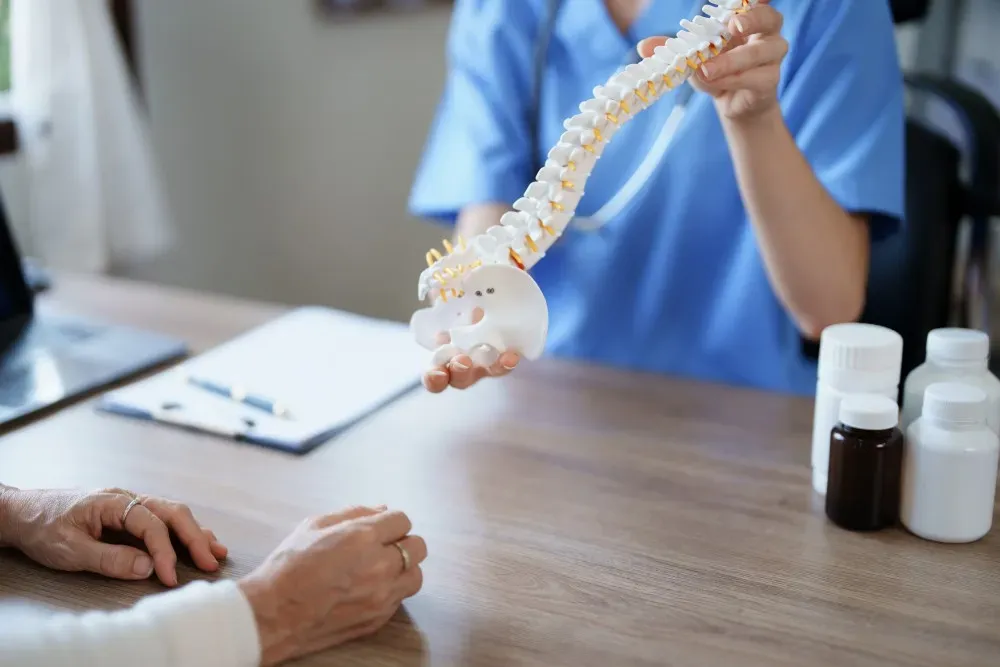Neurosurgery & Orthopedic Surgeons in Jacksonville

4 Conditions That Cause Joint Inflammation
The term “inflammation” gets a bad rap, but it’s an incredibly important component of a healthy immune system.
The term “inflammation” gets a bad rap, but it’s an incredibly important component of a healthy immune system. When harmful germs or pathogens enter your body, or when you sustain a wound, your immune system releases inflammatory markers to eliminate the danger and begin the healing process. Once you’re on the path to recovery, the inflammation goes away.
But what happens when inflammation remains and becomes chronic? That’s the point where it begins damaging tissues and cells, leading to chronic conditions like arthritis and heart disease.
Arthritis is the primary condition associated with joint pain and joint inflammation. Keep reading to learn more about the two most common types of arthritis, along with two more conditions that cause painful inflammation in the joints.
1. OSTEOARTHRITIS
Osteoarthritis — also called “wear and tear” arthritis or degenerative arthritis — is the most common form of arthritis in adults over 50. Osteoarthritis develops when cartilage in the joint breaks down and deteriorates. The articular cartilage cushions joint surfaces and enables the bones to glide smoothly over each other during movement. Cartilage degeneration causes swelling and pain, inflammation, and painful bone-on-bone friction in the joint. Over time, osteoarthritis causes bone and tissue damage as well. People with osteoarthritis experience:
- Pain in one or more joints
- Stiffness — especially first thing in the morning and after periods of inactivity
- Tenderness and swelling over the affected joints
- Loss of movement in one or more joints
- Grating, popping or cracking sounds during movement
- Bone spur formation around affected joints
In the early stages of osteoarthritis, symptoms may be mild and only present during activity. As the disease progresses, pain worsens and doesn’t recede with rest.
Age is the primary risk factor for developing OA, and more women than men develop osteoarthritis. Other risk factors include obesity, a history of joint injuries, repetitive motions, and genetics.
2. INFLAMMATORY ARTHRITIS
Inflammatory types of arthritis develop when the body’s immune system doesn’t work properly and releases inflammatory markers that attack the body’s own tissues and joints. Inflammation causes painful swelling, synovitis, cartilage damage, bone damage, ligament damage and nerve damage in and around the affected joints. People with inflammatory arthritis experience:
- Pain in one or more joints
- Stiffness — especially first thing in the morning and after periods of inactivity
- Redness, tenderness and warmth over the affected joints
- Loss of movement in one or more joints
In the early stages of inflammatory arthritis, symptoms can come and go in intense flare-ups, followed by periods of remission. However, as the disease progresses, symptoms occur more frequently and consistently.
Symptoms of inflammatory arthritis can spread beyond the joints, affecting organs like the eyes, heart, lungs and kidneys. Systemic inflammatory changes can also cause fever, fatigue, weakness and loss of appetite.
There are multiple types of inflammatory arthritis, including:
- Rheumatoid arthritis (RA)
- Ankylosing spondylitis (AS)
- Psoriatic arthritis
- Gout
- Lupus
Doctors don’t know exactly what causes inflammatory arthritis, but believe genetics plays a role. Women are more likely than men to develop inflammatory arthritis.
3. BURSITIS
Bursitis is a condition that causes inflammation to develop in the fluid-filled sacs that cushion soft tissues in joints. Tendons, ligaments and muscles have to move over bones during joint movement. Bursae (fluid-filled sacs) sit between soft tissues and bones to facilitate smooth, frictionless movement. The human body has over 140 bursae that act as joint cushioners.
Bursitis is frequently caused by performing repetitive motions (like throwing a baseball), spending long periods in positions that place pressure on the joints (kneeling, leaning on elbows), or sustaining a nearby tendon or ligament injury. Bursitis can also occur from an underlying condition like arthritis. People with bursitis experience:
- Joint pain
- Swelling and redness
- Stiffness
- Tenderness
- Loss of movement
In most cases, bursitis pain and inflammation resolve within a few weeks, but recurrent flare-ups are common.
4. INJURY
Soft tissue injuries like sprains, strains, tendon or ligament tears, or tendinitis cause localized inflammation around the affected joint. Sprains, strains, tears and inflammation are frequently caused by overuse/repetitive use, traumatic accidents (sports accidents, falls, car accidents), physically demanding occupations, and degenerative changes with age. People with a soft tissue injury experience:
- Swelling and pain
- Tenderness
- Decrease in joint mobility
- Joint instability
Without proper care and treatment, soft tissue injuries can lead to chronic pain, chronic inflammation, joint damage and osteoarthritis.
INTEGRITY SPINE AND ORTHOPEDICS TREATS SPINE AND JOINT CONDITIONS
Whether you’re suffering from an acute injury or a chronic condition, Integrity Spine and Orthopedics has the orthopedic care, pain management, sports medicine, and surgery services to help you to get back on your feet and back to doing the activities you love. Our board-certified and fellowship-trained surgeons specialize in providing minimally invasive, comprehensive care for a range of orthopedic and spine conditions.
We have a convenient clinic located in Jacksonville, FL. Please call us or reach out online to schedule your first appointment.




